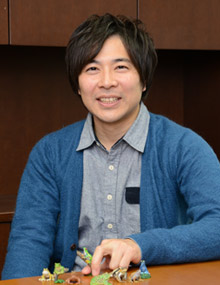
Developmental processes take place through the exchange of information by cells within the constrained spatial environment of the embryo. Such intercellular communication is essential for the formation of a well-ordered body; in its absence, our individual cells would behave in an uncoordinated fashion, and fail to follow the patterns needed for the development of the head, limbs, or other body parts. Factors that play central roles in such developmental signaling are known as morphogens.
In our research we will seek to gain a deeper understanding into processes informed by positional information in a spatial context (developmental fields), using vertebrate (mainly frog and zebrafish) axis formation as a model. The establishment of the frog dorsoventral axis depends on gradients of morphogens secreted by the organizer region. In order to ensure that development based on simple concentration gradients is stably reproducible, cell-cell communications mediated by morphogens need to be robust against perturbations. One example of such robustness can be seen in the response of a frog embryo when bisected; such embryos follow normal developmental patterns, despite being half the ordinary size, a phenomenon known as ‘scaling.’ Our team has previously shown how scaling is maintained through morphogen-mediated intercellular communication when the spatial size of the embryo is perturbed. In our lab, we address visualization of morphogen gradients and in vivo imaging along with biochemical approaches to study how developmental robustness is maintained.
We are also working to develop methods for controlling the shape of morphogen gradients. Gradients are primarily regulated by production, diffusion, and degradation, which indicates that by controlling these factors, it should be possible to arbitrarily design gradients that reconstruct tissue patterns in the embryo. By using such methods, we hope to gain a deeper understanding of developmental systems.

A:…
A:…
A:…
A:…
A:…
A:…
A:…
A:…
hideino[at]cdb.riken.jp
